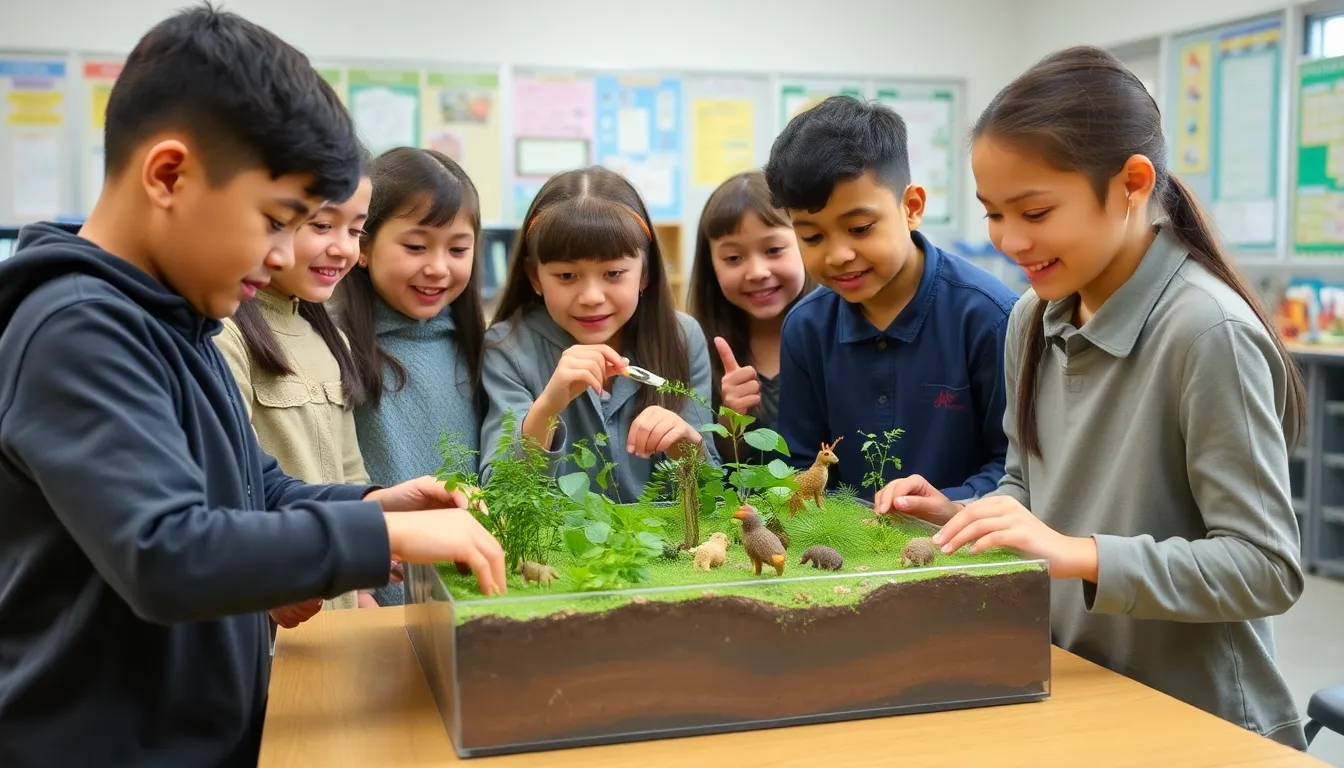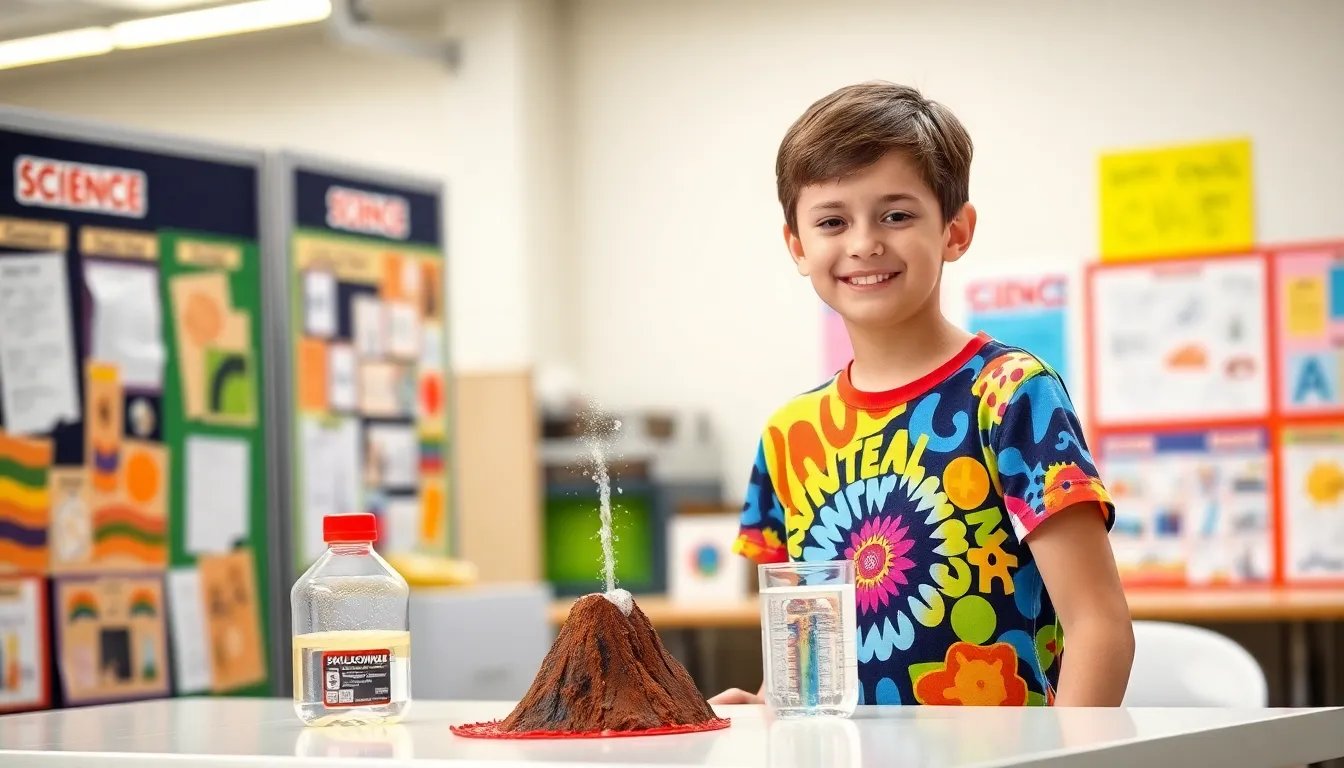Sixth grade is the golden age of curiosity where every question feels like a mini adventure waiting to unfold. It’s the perfect time for students to dive into the world of science and unleash their inner mad scientist. Whether they’re crafting a volcano that erupts with the force of a thousand soda geysers or exploring the mysteries of plant growth, the right project can spark a passion for discovery that lasts a lifetime.
But let’s face it—finding the perfect science project can sometimes feel more daunting than solving a Rubik’s Cube blindfolded. Fear not! This article is packed with fun and engaging ideas that’ll not only impress teachers but also keep those young minds buzzing with excitement. Get ready to explore projects that mix creativity with scientific principles, ensuring that learning is as entertaining as it is educational.
Table of Contents
ToggleScience Project Ideas for 6th Grade
Students can explore a variety of exciting science projects in sixth grade. Here are several engaging ideas designed to spark curiosity:
- Volcano Eruption Experiment: Create a model volcano using baking soda, vinegar, and food coloring. This project demonstrates chemical reactions and can teach students about geology.
- Plant Growth Investigation: Experiment with different types of soil or light conditions to determine what affects plant growth. This investigation will enhance understanding of photosynthesis and plant biology.
- Homemade Barometer: Construct a barometer using a jar, balloon, and straw. Students can observe how air pressure changes with weather patterns, reinforcing concepts in meteorology.
- Solar Oven: Build a solar oven with a pizza box to cook s’mores. This project teaches about renewable energy and solar power while providing a delicious outcome.
- Magnetism Exploration: Use various magnets to test which objects attract and which do not. Students can learn the fundamentals of magnetism and scientific observation.
- Water Filtration System: Design a simple water filtration system using sand, gravel, and charcoal. This project raises awareness about clean water access and environmental science.
- Crystals Growth Experiment: Create sugar or salt crystals in a controlled environment. This experiment illustrates crystallization processes and provides a visual representation of chemical bonds.
- Balloon Rocket: Launch a rocket powered by a helium-filled balloon to study physics principles like force and motion. Students will enjoy the hands-on aspect while grasping essential science concepts.
These projects, among many others, encourage practical learning and foster a deeper interest in science during an important educational stage.
Fun and Engaging Topics

Exploring fun science project topics captivates all sixth graders. Each project encourages creativity and critical thinking while making learning enjoyable.
Environmental Science Projects
Creating environmental science projects fosters awareness of ecological issues. Building a model ecosystem showcases interactions between plants, animals, and the environment. Conducting a water quality test demonstrates how pollution impacts local water sources. Investigating the effects of different substances on plant growth introduces concepts of chemical reaction and biology. Forming a composting experiment teaches students about decomposition and nutrient cycling. These hands-on activities inspire a passion for environmental stewardship.
Physics and Engineering Challenges
Experimenting with physics and engineering challenges sparks interest in technology and innovation. Constructing a simple machine, like a catapult, illustrates fundamental mechanical principles. Designing a roller coaster with household materials explores concepts like gravity and energy transfer. Testing the strength of different materials through a bridge-building activity enhances understanding of structural engineering. Incorporating a marble run reinforces principles of motion and speed. Engaging in these challenges strengthens problem-solving skills and fuels curiosity in scientific concepts.
Simple Experiments to Try
These simple experiments engage sixth graders in hands-on science learning. They encourage creativity and curiosity, providing opportunities to explore scientific concepts actively.
Kitchen Chemistry Projects
Kitchen chemistry projects blend everyday materials with fun experiments. Making homemade slime illustrates polymer science. Mixing baking soda and vinegar creates a volcano effect, demonstrating acid-base reactions. Students can also experiment with food coloring in water to visualize diffusion and solubility. Observing how different liquids layer in a density tower provides insight into density variations. These activities promote scientific inquiry and inspire students to explore chemical reactions.
Nature-Based Investigations
Nature-based investigations connect students to their environment. Observing plant growth encourages understanding of photosynthesis and ecosystems. Conducting simple soil tests helps assess pH levels and nutrient content, fostering ecological awareness. Building a bird feeder allows for wildlife observation and understanding animal behavior. Collecting and analyzing water samples from local sources educates students about aquatic ecosystems and pollution. Such projects cultivate curiosity and strong connections to nature while reinforcing scientific principles.
Tips for Successful Science Projects
Successful science projects require careful consideration and planning. Students should choose topics that fascinate them, ensuring genuine interest in their experiments. Consider available resources and materials before finalizing a project. Ensuring feasibility helps maintain motivation throughout the process. Keeping deadlines in mind allows for thorough research and experimentation. Collaborating with peers or seeking guidance from teachers can enhance the learning experience.
Research and Planning
Researching the chosen topic establishes a strong foundation. Gathering information from credible sources like books and scientific journals ensures accuracy. Formulating a clear hypothesis guides the project structure. Students must create a step-by-step plan, detailing materials and procedures for the experiment. Considering potential challenges during planning prepares students for possible adjustments. Planning time for setup, testing, and analysis significantly contributes to successful outcomes.
Presentation and Reporting
Effective presentation captures attention and communicates findings clearly. Students should use visuals like charts, graphs, or models to illustrate results. Clear organization enhances understanding, with sections for introduction, methods, results, and conclusions. Practicing the presentation builds confidence and smooth delivery. Engaging storytelling can develop a narrative around the project that resonates with the audience. Utilizing feedback from peers or teachers before the final presentation can refine the content and ensure clarity.
Resources for Inspiration
Finding the right resources boosts creativity and innovation in science projects. Several effective avenues exist for discovering unique ideas that enhance learning and engagement.
Books and Websites
Books offer comprehensive insights into various science topics. Publications like “The Science Book: Big Ideas Simply Explained” provide clear explanations and experiments. Websites such as National Geographic Kids and Science Buddies feature interactive content and project guides. Online platforms like YouTube also showcase educational videos demonstrating hands-on experiments. Blogs focused on science education often share fresh project ideas tailored for sixth graders. Combining these resources ensures students gain diverse perspectives and inspiration for their projects.
Science Fairs and Competitions
Participating in science fairs allows students to showcase their creativity and understanding of scientific concepts. Local school fairs often encourage students to explore diverse topics. Competitions, such as the Intel International Science and Engineering Fair, provide opportunities for students to engage in higher-level projects. Many schools provide guidelines to help students develop their own project ideas. The experience of presenting projects helps build public speaking and critical thinking skills. Engaging in these activities helps foster a spirit of inquiry and collaboration, enhancing enthusiasm for science learning.
Sixth grade is a pivotal time for young learners to dive into the world of science. With the right projects students can explore their interests while developing essential skills. Engaging in hands-on activities not only makes learning enjoyable but also fosters a deeper understanding of scientific concepts.
By choosing projects that resonate with their passions students can enhance their creativity and critical thinking. Whether it’s building a solar oven or conducting water quality tests these experiences can spark a lifelong love for science. Encouraging curiosity and exploration is key to nurturing the next generation of innovators and problem solvers.



